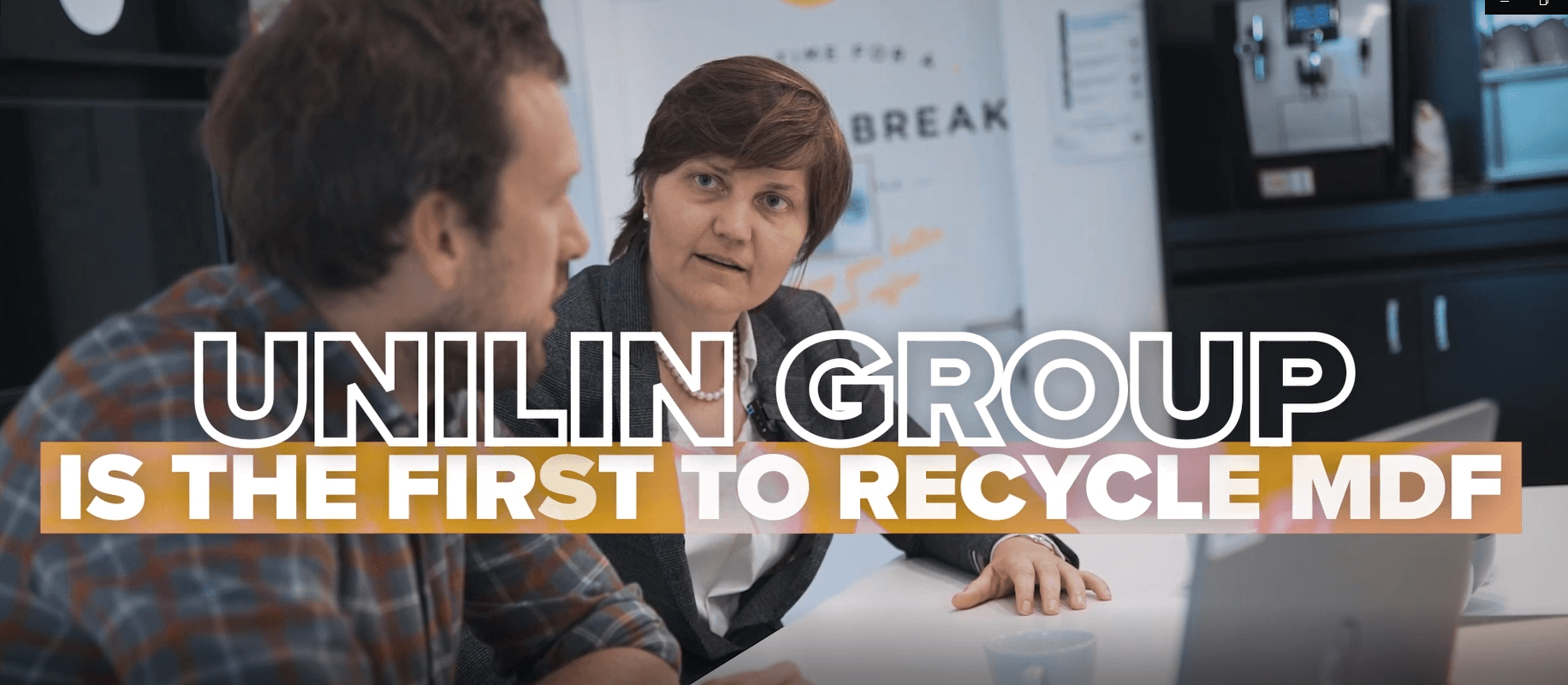World first: Unilin first to recycle MDF boards

For the longest time it was not technically possible to recycle the millions of MDF boards manufactured each year on an industrial scale. Until now. Unilin has developed a unique technology to recover and reuse wood fibres. With this world first we can not only give wood fibres a new lease of life but also ensure the retention of 380,000 tons of CO2.
Five things you should know about the recycling of MDF:
Recycling MDF is an absolute world first
First and foremost: this brand-new technology is an absolute world first. Our chipboards today already consist of 95% recycled wood, but until now it proved impossible to recycle MDF on a large scale. As a result, the millions of cubic metres of MDF boards manufactured worldwide each year were incinerated. The problem? The wood fibres. They are bonded and are therefore not suited for reuse. At least, so everyone thought.
By 2030 Unilin Group aims to replace at least 25% of its raw materials mix with recycled fibres.
What sparked this innovative technology? A pressure cooker...
The process used to recycle MDF boards can best be compared with the operation of a pressure cooker. First the MDF boards are moistened with steam. Then they are heated and subjected to enormous pressure. Subsequently the pressure is decreased, causing the fibres to detach. Making this simple concept feasible on an industrial scale was no mean feat. An astonishing achievement by our R&D team!
Thanks to this new technology the wood fibres can be reused for the production of high-quality boards, which doubles their life span. Just think of our decorative Evola panels or Quick-Step laminate floors.
We can now retain CO2 twice as long - and that benefits the environment
Wood stores and retains CO2 for its entire life cycle. In addition, Unilin has made a conscious decision to use reclaimed wood. This is wood waste or wood that is no longer usable and is therefore saved from incineration. First of all, this means that Unilin no longer cuts trees for production purposes but is able to extend the life of the waste wood through a novel material application. That in itself made MDF a highly sustainable material. Now we are taking things one step further.
Recycling MDF brings the wood fibres back into circulation and the CO2 stored in the wood is retained much longer. In other words: we give wood fibres a new material application, thereby keeping it in the production chain for longer. This world first will allow us to store an additional 380,000 tons of CO2 each year.
Sustainable ambitions: Recycling MDF is just the beginning
The recycling of MDF is fully in line with Unilin’s sustainable raw materials strategy of using 100% reclaimed or recycled wood and prolonging the product life of wood as much as possible. We regard innovation as a precondition to realising our ambitious climate goals. That is why over the next two years the group will invest a further €160 million in Belgium, amongst others in research and development.
President Unilin Panels Veronique Hoflack herself was at the basis of this sustainable innovation
It was Veronique Hoflack (President Unilin Panels) herself who came up with the idea for the technology used to recycle MDF. She first tested her theory at home in her own kitchen. The initial results were promising so she took things to the next level. Together with her entire team she fine-tuned, tested and industrialised the entire process. Impressive!
Read more on the Unilin Panels website.